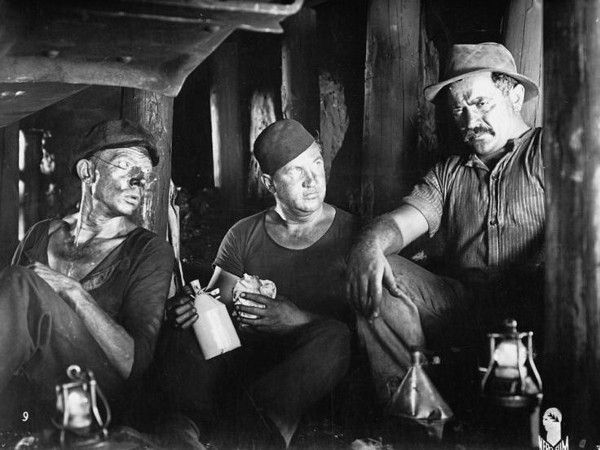Eye For Film >> Movies >> Kameradschaft (1931) Film Review
Kameradschaft
Reviewed by: Jennie Kermode

On the 10th of March, 1906, Europe suffered its worst mining accident to date. 1,099 people were killed as a result of a coal dust explosion in the Courrières mine near Lens in the north of France. The last survivor to be pulled out alive was trapped for 25 days down there in the dark. At the time, France had few specialist rescuers with the right training, and German rescue teams were among those who came to the aid of the trapped men.
Kameradschaft is inspired by those events, but in order to give his story more immediate relevance in 1932 and use it to send a political message about solidarity and the importance of free movement between nations, GW Pabst relocated it to the new border region of Lorraine/Saar, in the aftermath of World War One. Tensions were high in the area at the time, as many of those living within a mile of each other had been engaged in bitter combat just a few years before. Pabst's film was genuinely successful - for the remainder of the inter-war period - at allaying some of those tensions and reminding people on both sides of the border of what they had in common.

The language in the film is pretty evenly divided between French and German, as is the time we spend with different characters. Drawing on local dialect, each language features borrowings from the other; only among the middle classes, smartly uniformed, wearing bowler hats or riding horses, are they 'pure'. Nevertheless, Pabst shows us the wariness that the working class people have of one another, the fear that flickers in French eyes as Germans arrive when they are already in desperate straits - and the relief expressed on both sides as it comes to be understood that they are all miners first, bound to their particular nations only as a secondary consideration.
Very much an ensemble piece, Kameradschaft doesn't give us a lot of room to get to know individuals, but a few actors manage to make their characters stand out. Andree Ducret is powerful even in her silences as a young woman whose brother and boyfriend and trapped beneath the ground, perhaps already dead. Ernst Busch brings humanity to speeches which have been parodied too many times since to have the impact now that they once did.
Pabst is a master of the crowd scene and delivers some amazing work here, with his camera tracking through tangles of protesting relatives and miners cleaning up after emerging from the pit, seemingly casual yet only ever showing us exactly what he wants us to see. Whole character stories unfold in asides as we see a woman lift a baby hurriedly in through a window, see a wounded young man call out to a pit pony instead of his father. Fritz Arno Wagner and Robert Baberske's inspired cinematography brings depth to all these vivid images even in the darkest of places, and effectively conjures up the narrow beams of miners' lamps, the little slices of illumination penetrating where tunnel roofs are broken.
Even today, it's hard to believe, when watching this, that the events are not taking place in a real mine. In fact, all the underground scenes were filmed in a studio, in sets brilliantly designed by Erno Metzner and Karl Vollbrecht with what were, by today's standards, scant materials to choose from. The effect is intensely claustrophobic and one can only imagine how it must have affected audiences during the film's first theatrical run.
Though it may seem a bit heavy handed in its politics by today's standards, Kameradschaft remains an impressive piece of work, and provides a fascinating window into the past.
Available on Blu-ray with Westfront 1918.
Reviewed on: 23 Jul 2017

















